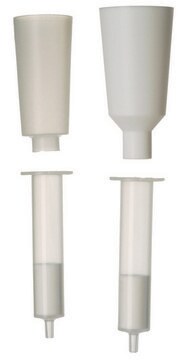34852
Ethyl alcohol, pure
≥99.8%, suitable for HPLC, absolute
Sinónimos:
Alcohol etílico
About This Item
Productos recomendados
product name
Etanol, absolute, suitable for HPLC, ≥99.8%
vapor density
1.59 (vs air)
Quality Level
vapor pressure
44.6 mmHg ( 20 °C)
grade
absolute
assay
≥99.8%
form
liquid
autoignition temp.
683 °F
expl. lim.
19 %, 60 °F
greener alternative product characteristics
Safer Solvents and Auxiliaries
Learn more about the Principles of Green Chemistry.
technique(s)
HPLC: suitable
impurities
≤0.001% free acid (as CH3COOH)
≤0.001% non-volatile matter
≤0.2% water (Karl Fischer)
≤1 ppb fluorescence (quinine) at 254 nm
≤1 ppb fluorescence (quinine) at 365 nm
transmittance
210 nm, ≥20%
225 nm, ≥50%
240 nm, ≥80%
260 nm, ≥98%
refractive index
n20/D 1.3600 (lit.)
bp
78 °C (lit.)
mp
−114 °C (lit.)
format
neat
greener alternative category
SMILES string
CCO
InChI
1S/C2H6O/c1-2-3/h3H,2H2,1H3
InChI key
LFQSCWFLJHTTHZ-UHFFFAOYSA-N
¿Está buscando productos similares? Visita Guía de comparación de productos
General description
Caution
Footnote
signalword
Danger
hcodes
Hazard Classifications
Eye Irrit. 2 - Flam. Liq. 2
Storage Class
3 - Flammable liquids
wgk_germany
WGK 1
flash_point_f
55.4 °F - closed cup
flash_point_c
13 °C - closed cup
Certificados de análisis (COA)
Busque Certificados de análisis (COA) introduciendo el número de lote del producto. Los números de lote se encuentran en la etiqueta del producto después de las palabras «Lot» o «Batch»
¿Ya tiene este producto?
Encuentre la documentación para los productos que ha comprado recientemente en la Biblioteca de documentos.
Nuestro equipo de científicos tiene experiencia en todas las áreas de investigación: Ciencias de la vida, Ciencia de los materiales, Síntesis química, Cromatografía, Analítica y muchas otras.
Póngase en contacto con el Servicio técnico

